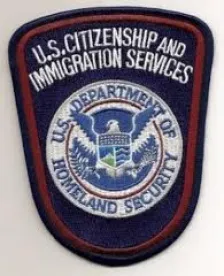In October 2011, USCIS Director Mayorkas announced the “Entrepreneurs in Residence” (EIR) initiative to bring in “industry expertise to strengthen USCIS policies and practices surrounding immigrant investors, entrepreneurs and workers with specialized skills, knowledge, or abilities.” Director Mayorkas has noted that the goal of the initiative and introduction of expert views from the private and public sectors is to “help us [USCIS] to ensure that our policies and processes fully realize the immigration law’s potential to create and protect American jobs.”
The initiative was launched with a series of informational summits with industry leaders to gather strategic input so that the agency may create a tactical team that includes entrepreneurs and experts working with USCIS personnel “to design and implement effective solutions.” The first information summit took place on February 22, 2012, in Silicon Valley, California. At this time, EIR will focus on assessing current policies, practices and training across the following nonimmigrant visa classifications: B, Temporary Visitors for Business; H-1B, Specialty Occupations; E-1, Treaty Traders; L-1, Intracompany Treansferees; and O-1 Extraordinary Ability.
The EIR initiative builds on USCIS’s recent efforts to promote startup enterprises and spur job creation, including enhancements to the EB-5 immigrant investor visa program. The EB-5 program enjoys increasing success and is widely supported by many in Congress from both sides of the aisle, however USCIS continues to face criticism for its administration of the program due to its fluid interpretations of EB-5 requirements, inconsistencies in adjudications and lack of understanding of business realities. In response to these criticisms, USCIS has taken steps to address some of the issues with timing and unpredictability. Director Mayorkas has expressed his interest in the program and is leading the Agency in taking steps toward providing a more transparent and predictable decision making process. Director Mayorkas has noted that “[a]s part of our broad review, and echoing President Obama’s call to promote immigrants’ entrepreneurial spirit, we have focused on the Immigrant Investor Program, commonly referred to as the EB-5 Program. It is a program designed to attract investors and entrepreneurs from around the world to create jobs in America. In the two decades since its creation, the EB-5 Program has never met the annual cap of 10,000 visas.” With his direction, the USCIS is taking steps that are expected to help improve the timing and adjudication of these petitions.
Some reforms already in progress include:
- The introduction of direct e-mail contact between the Regional Center petitioners and the USCIS adjudication team.
- The introduction of accelerated process and premium processing for certain applicants and petitions, expected in the Spring of 2012.
- The use of an expert Decision Board to assist adjudicators in rendering final adjudication decisions on Regional Center petitions.
- Hiring economists with business analysis expertise to help guide and support the USCIS adjudication team.
- Hiring a consulting firm to help further reengineer the EB-5 adjudication process to deliver greater efficiencies.


 />i
/>i


